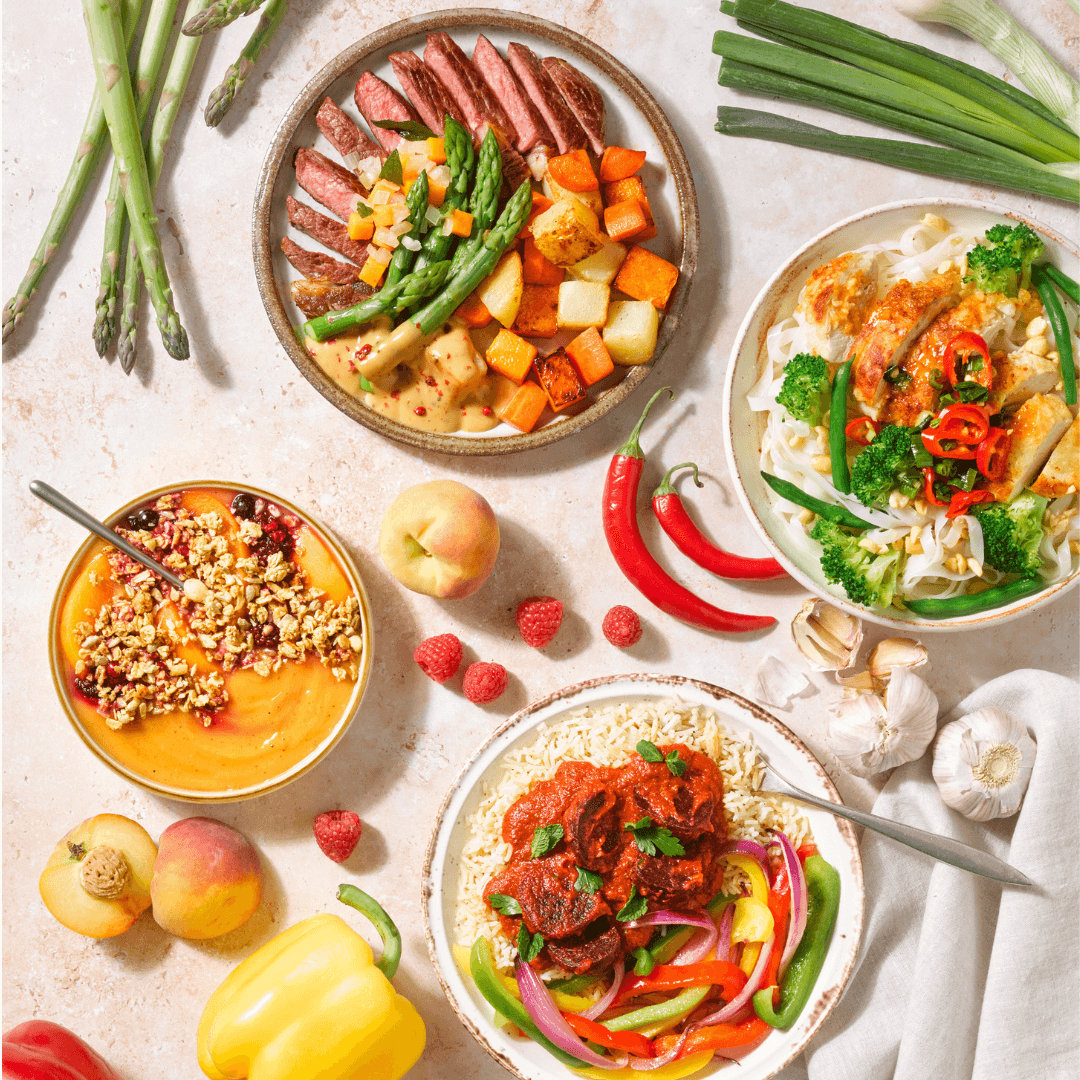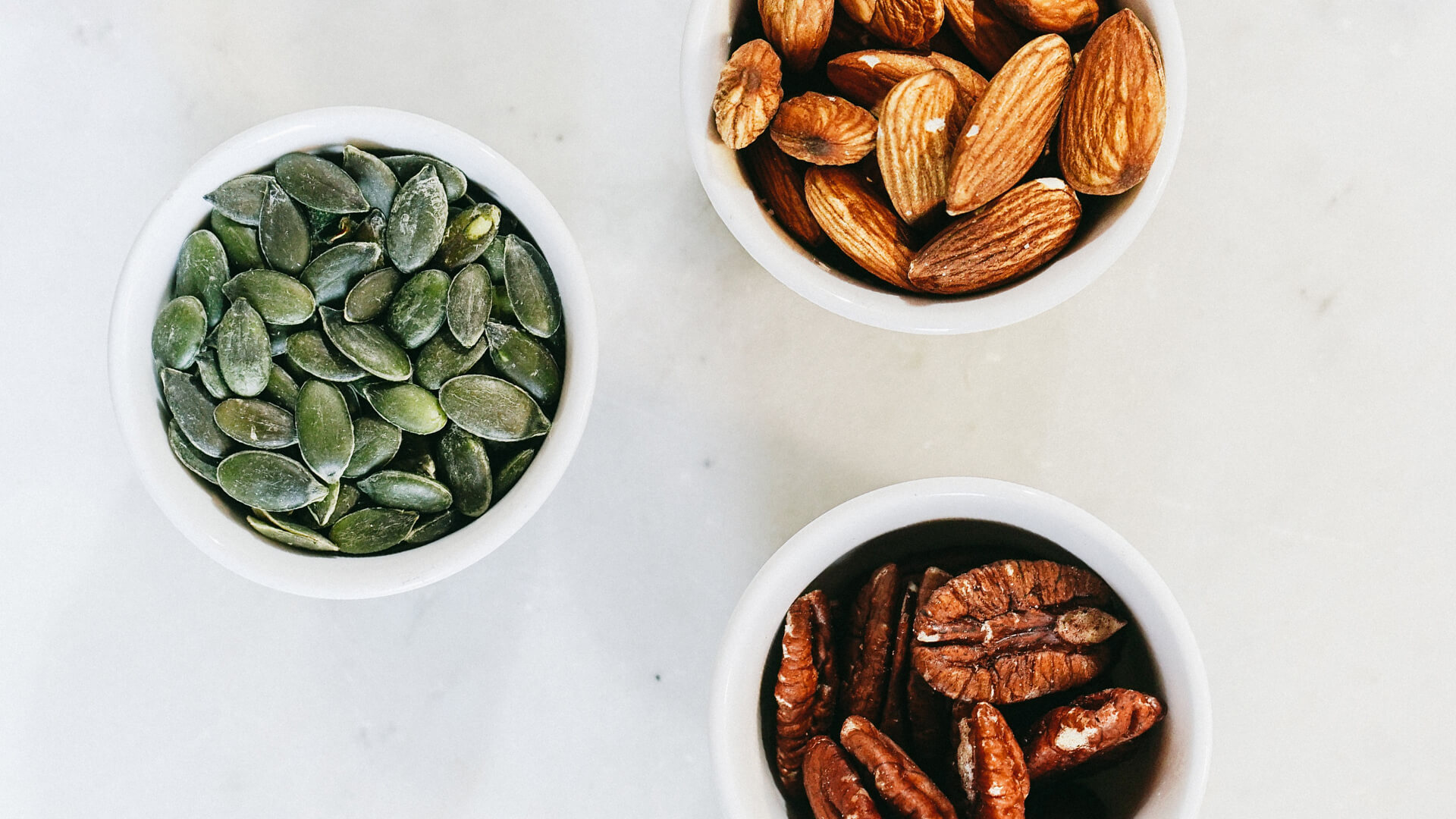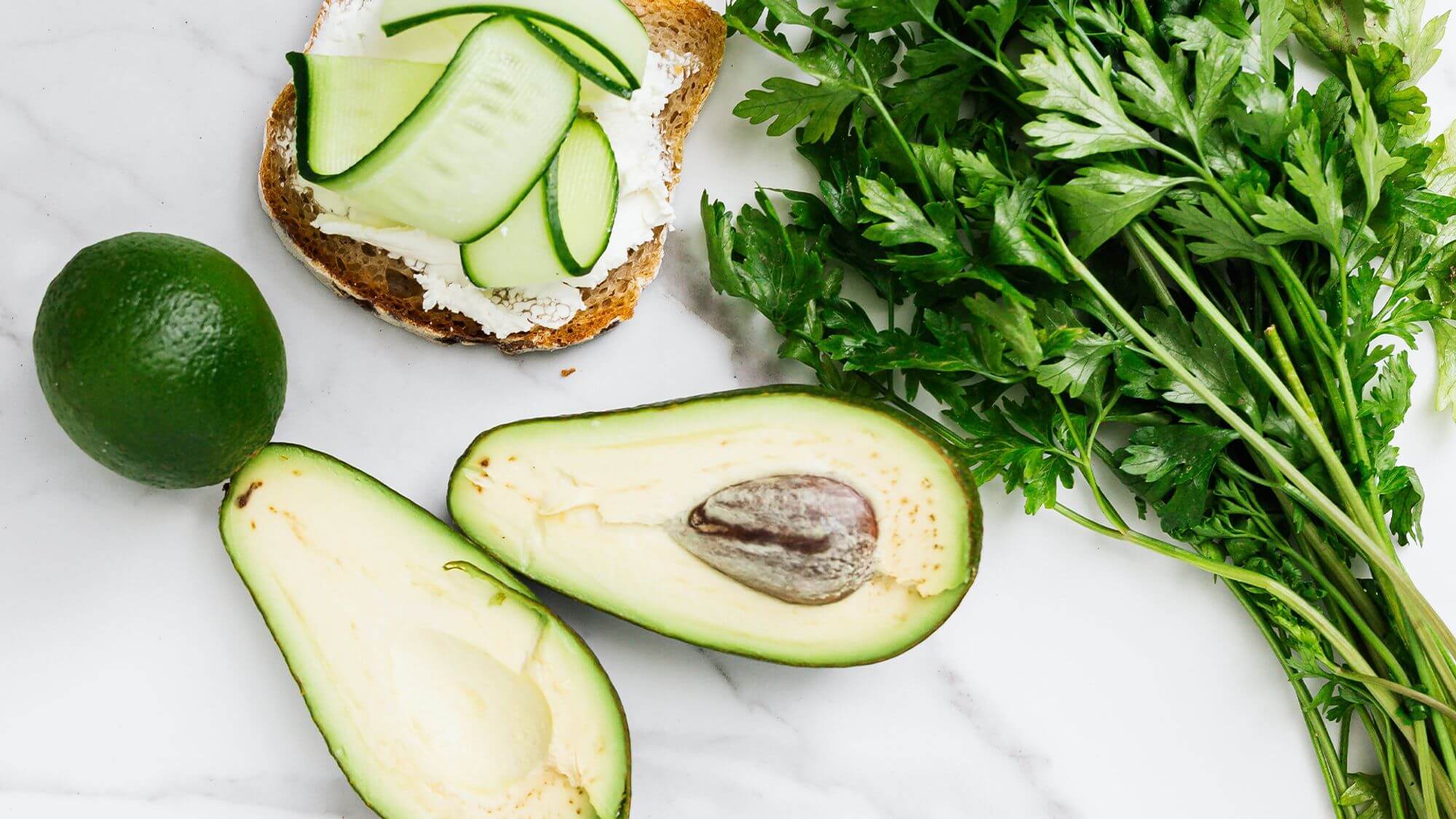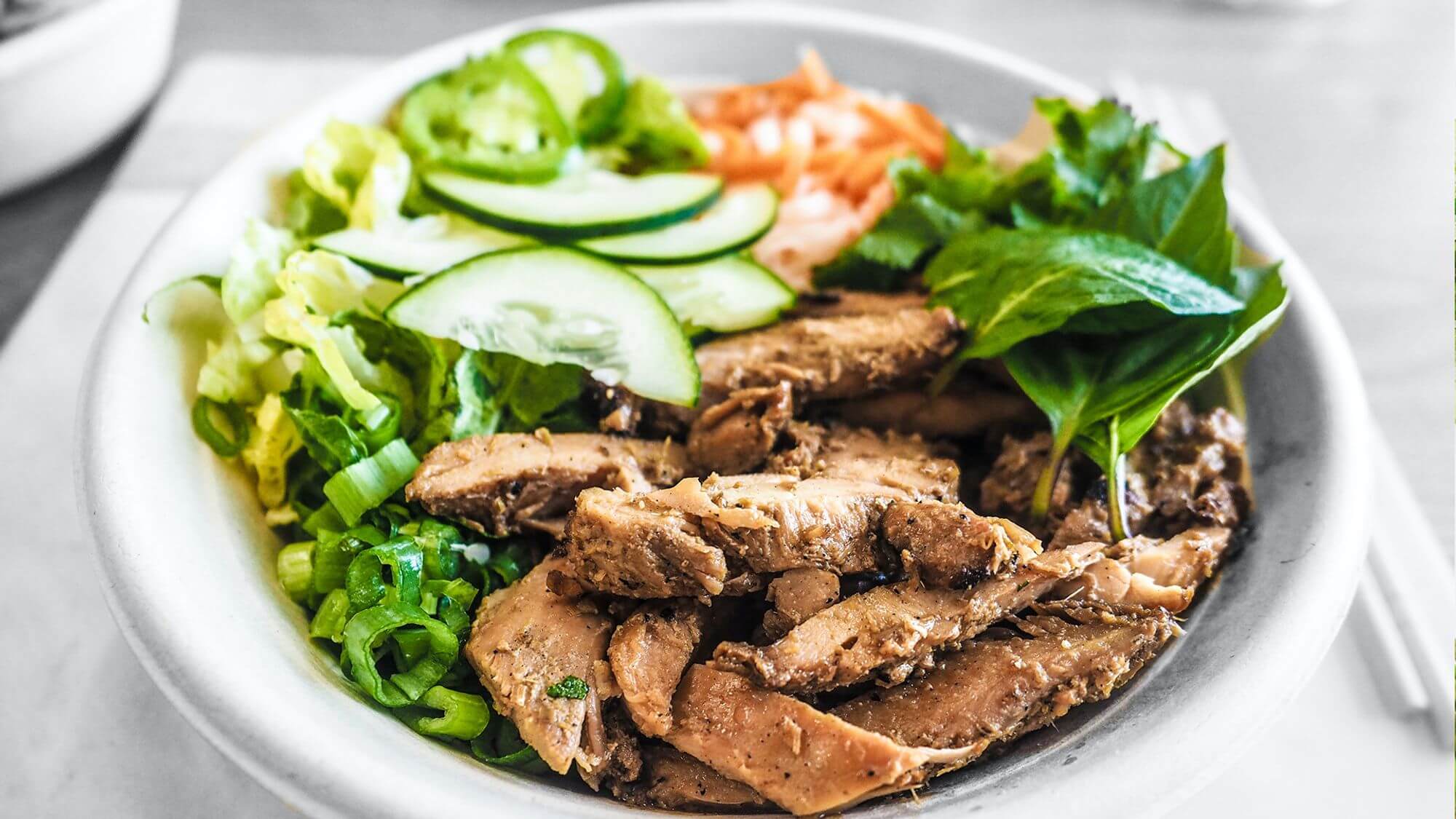Cooking every meal from scratch sounds great in theory, but when life gets busy, it is the first thing to fall apart. That is where meal prep comes in. Planning and prepping meals ahead of time takes the guesswork out of eating well and makes it easier to stay on track with weight loss.
Not just for bodybuilders and influencers, studies show that meal planning is linked to lower odds of being overweight or obese, particularly in women. And the good news is that getting started doesn't have to be complicated either. This guide breaks down beginners' weight loss meal prep into simple steps—no complicated recipes, overthinking every meal or hours in the kitchen required.
Why Meal Prepping Is Effective for Weight Loss
Losing weight is as much about eating the right food as it is about hitting the gym. Having ready-made, portioned meals removes the guesswork, making it easier to stay on track without constantly counting calories or wondering what to eat.
The Benefits of Meal Prepping for Weight Loss
- - Portion control without the hassle: Overeating is one of the biggest weight loss obstacles. Prepping meals in advance means portions are already decided, so there’s no need to eyeball serving sizes or risk going back for seconds.
- - No more last-minute unhealthy choices: Hunger and a lack of options can lead to quick decisions that often involve takeaways, meal deals or snacks that are convenient but not exactly weight-loss-friendly. Having meals prepped in advance removes the temptation of grabbing whatever is easiest.
- - A balanced diet made simple: A good meal prep plan includes the right balance of protein, healthy fats and complex carbs. Instead of stressing about what to eat every day, everything is already sorted with meals that fuel the body and keep cravings under control.
- - Saves time during the week: Cooking from scratch every night sounds great until reality sets in. Prepping meals in one go means less time in the kitchen and more time for everything else. Even if it takes an hour or two upfront, that time is saved multiple times over the course of the week.
Common Meal Prep Myths
- - "Meal prepping takes too long": A couple of hours once or twice a week is all it takes to have meals sorted for days. It is far less time-consuming than cooking from scratch every night or making multiple supermarket trips. With a bit of practice, meal prepping becomes quicker and more efficient.
- - "Meal prepping is expensive": Buying ingredients in bulk, planning ahead and reducing food waste often makes meal prepping cheaper than grabbing meals on the go. Instead of spending money on last-minute lunches or takeaways, everything is prepared at home for a fraction of the price.
- - "Prepped meals are boring and repetitive": Meal prepping doesn’t mean eating the same thing daily. Don't be afraid to add variety by mixing up seasonings, sauces and ingredients to keep things interesting and those taste-buds satisfied.
How to Start Meal Prepping for Weight Loss: Key Principles
Jumping into meal prepping for weight loss without a plan can feel overwhelming and lead to disappointment, but breaking it down into simple steps makes it much more manageable.
Know Your Calorie Needs
Before planning meals, it helps to have a rough idea of how many calories you need each day for weight loss. A general rule is to consume fewer calories than you burn, but the right number depends on factors like age, activity level and weight loss goals. Use a calorie calculator to get an accurate and personal estimate.
Balance Your Macros
Meal prep involves fuelling your body properly. A well-balanced meal should include:
- - Protein: As the most filling macronutrient, protein, such as lean meats, eggs, fish, tofu and legumes, helps maintain muscle while losing weight.
- - Carbohydrates: Whole grains, starchy vegetables and fibre-rich carbs, like quinoa, brown rice, oats and sweet potatoes, provide steady energy and keep cravings at bay.
- - Fats: Healthy fats, found in avocados, nuts, olive oil and fatty fish like salmon, add flavour and help absorb nutrients while keeping you full.
Find the Right Meal Frequency
There’s a lot of debate about whether it’s better to eat three larger meals or five to six smaller meals per day. Some believe frequent meals keep metabolism high, but research on this is mixed. The best approach is the one that fits your routine. If three balanced meals a day work, stick to that. If smaller, more frequent meals help control hunger, then go for it.
Avoid Boredom with Variety
One of the biggest challenges with meal prepping is avoiding the “chicken, rice and broccoli” rut. But keeping meals interesting doesn’t automatically require extra effort—it just means mixing things up.
- - Rotate proteins (swap chicken for turkey, fish or tofu).
- - Use different seasonings and marinades.
- - Add variety and extra flavour with sauces and toppings.
- - Change up the way your meals are cooked (roasting, grilling, air frying, etc.).
Meal Prepping on a Budget
Eating well shouldn’t drain your wallet. A few smart strategies can keep meal prep affordable while still packing in plenty of nutrition and flavour.
- - Start small: Instead of prepping every meal, focus on the ones where you are most likely to grab something unhealthy, like lunch or dinner.
- - Plan ahead and shop smart: Make a list before heading to the supermarket. Buying ingredients in bulk, choosing frozen fruits and vegetables and sticking to seasonal produce helps cut costs.
- - Batch cook and freeze: Cooking larger portions and freezing meals means there is always something ready when time is tight.
- - Use affordable protein sources: Eggs, beans, lentils, and canned tuna are great protein options that cost less than fresh meat or fish.
Read our guide on ‘How to Meal Prep Like a Pro’ to find out more.

Frive’s Smokey Baharat Mango Tofu is less than 500kcal per meal
What Should a Beginner Eat to Lose Weight?
You can't expect to see results without understanding which foods you need to include in your meal prep to support your weight-loss journey. Here is what to fill your plate with to make healthy eating feel effortless.
Lean Proteins
The secret weapon for weight loss is protein. It keeps you feeling full, helps build and maintain muscle, and stops mid-afternoon cravings in their tracks. Consider adding the following to your diet:
- - Chicken & turkey: Skinless poultry provides high-quality protein with minimal fat.
- - Fish & seafood: Rich in omega-3 fatty acids, fish and seafood like salmon, mackerel, and prawns support heart health.
- - Tofu and lentils: Excellent plant-based proteins suitable for vegetarians and vegans.
- - Greek yoghurt: Rich in protein, Greek yoghurt helps you stay full and satisfied while supporting gut health thanks to its high probiotic content.
Read our guide ‘7-Day Protein Diet Plan For Weight Loss (Meat & Plant Based)’ to find out more.
Fibre-Rich Carbohydrates
Choosing carbohydrates high in fibre boosts energy, helps regulate blood sugar levels, and keeps you satisfied for longer, sustained energy.
- - Quinoa and brown rice: Whole grains provide fibre and essential minerals.
- - Legumes: Beans and lentils are rich in protein and fibre and promote fullness.
- - Sweet potatoes: High in vitamins C and A, sweet potatoes offer a nutritious, high-fibre alternative to regular white potatoes.
Healthy Fats
Healthy fats are essential for hormone production and nutrient absorption.
- - Avocados: This popular fruit contains monounsaturated fats that support heart health.
- - Nuts and seeds: Provide a combination of protein, fibre, and healthy fats.
- - Olive oil: A great source of monounsaturated fat, ideal for cooking and dressings.
Low-Calorie Vegetables
Vegetables that are low in calories but high in nutrients should be staples in your diet, bulking up meals and allowing you to eat satisfying portions without excessive calories.
- - Leafy greens: Spinach and kale are rich in vitamins and minerals.
- - Cruciferous vegetables: Broccoli and cauliflower offer fibre and support digestive health.
- - Peppers: Add colour, flavour, and vitamins with minimal calories.
Hydrating Foods and Drinks
Staying hydrated supports metabolism and can sometimes curb unnecessary snacking.
- - Water-rich fruits: Fruits like watermelon and cucumbers help maintain hydration.
- - Herbal teas: A calorie-free and flavourful alternative to water.
- - Infused water: Adding slices of citrus or berries to water can enhance flavour without added sugars.

Frive’s Vietnamese Sea Bass is only 483kcal per meal
Foods to Avoid When Trying to Lose Weight
When it comes to weight loss, knowing what foods to avoid is just as important as including the right ones in your diet. Here are some foods and beverages to limit or avoid:
Highly Processed Foods
Foods high in added sugars, unhealthy fats, and lacking essential nutrients can contribute to weight gain and other health issues. Examples include:
- - Crisps and savoury snacks: Often high in unhealthy fats and salt, making them easy to overeat without real nourishment.
- - Pastries, cakes, and biscuits: While they might be a nice treat, they tend to be high in sugar and refined flour, offering little nutritional value and leading to energy crashes and increased hunger later on.
- - Ready meals and processed foods: Many supermarket ready meals are high in calories, salt, and artificial additives, making home-cooked meals a better weight-loss option.
Sugary Drinks and Excessive Alcohol
Drinks can be a hidden and often forgotten source of excess calories.
- - Fizzy drinks and sweetened juices: Loaded with added sugar and can cause rapid spikes in blood sugar, leading to energy crashes and cravings.
- - Alcoholic drinks: Alcohol is calorie-dense and can lead to mindless snacking, especially in social settings. Beer, cocktails, and sugary mixers add extra calories quickly.
Refined Carbohydrates
Refined carbs lack fibre and essential nutrients, leading to rapid spikes in blood sugar levels followed by energy crashes:
- - White bread and pastries: Made from refined flour, these products can cause rapid increases in blood sugar, leading to increased hunger and potential overeating.
- - Sugary cereals: Often marketed as healthy, many cereals contain high levels of added sugars and lack fibre.
How to Meal Prep for the Week for Beginners: Example Meal Plan
Planning meals ahead of time makes weight loss easier by ensuring you always have healthy options that are ready to go. Below is a simple weight loss meal plan for a week, along with a basic shopping list to get started.
Breakfast
- - Greek yoghurt with berries and a sprinkle of oats
- - Scrambled eggs with whole grain toast and spinach
- - Porridge with almond butter and banana
Have a read of our guide ’How to Get 30g of Protein for Breakfast: Easy & Tasty Recipes’ for more inspiration.
Lunch
- - Grilled chicken salad with mixed greens and balsamic dressing
- - Tuna and avocado wrap with whole wheat tortilla
- - Lentil soup with a side of whole grain crackers
Dinner
- - Baked salmon with quinoa and roasted broccoli
- - Turkey and vegetable stir-fry with brown rice
- - Chickpea and spinach curry with whole wheat naan bread
Snacks
- - Apple with peanut butter
- - Cottage cheese with walnuts
- - Hummus with carrot and cucumber sticks
Shopping List
- - Protein: Chicken breast, turkey mince, salmon, tuna (canned), eggs, Greek yoghurt, cottage cheese, lentils, and chickpeas
- - Carbohydrates: Oats, whole grain bread, whole wheat wraps, brown rice, quinoa, whole wheat naan, and sweet potatoes
- - Vegetables and fruits: Spinach, mixed greens, broccoli, carrots, cucumber, peppers, berries, bananas, apples, and avocado
- - Healthy fats: Almond butter, peanut butter, walnuts, olive oil, and hummus
- - Pantry staples: Balsamic vinegar, herbs and spices, low-sugar dressings, and whole grain crackers

Frive’s Baked Mushroom Puttanesca Roots Rigatoni is only 473kcal per meal
Meal Prep Tips for Beginners
Embarking on a meal prep journey can seem daunting, but with the right strategies, it becomes a manageable and rewarding habit that culminates in some big results. Here are some essential tips to help beginners get started:
- 1. Start small and simple: Begin with prepping just a few meals or snacks to avoid feeling overwhelmed. Focus on recipes you enjoy and are familiar with to build confidence.
- 2. Plan your meals: Make shopping simpler and plan your weekly meals with your schedule and dietary goals in mind, making sure you have balanced, satisfying options ready for busy days.
- 3. Batch cooking: Prepare large quantities of staple foods like grains, proteins, or roasted vegetables that can be used in various dishes throughout the week.
- 4. Invest in quality storage: Use airtight containers to keep meals fresh and organised. Clear containers allow you to see contents easily, and labelling them with dates ensures you consume them before they expire.
- 5. Use time-saving appliances: Luckily, there are more tools than ever to streamline the meal prep process. Prep meals with minimal effort by investing in a slow cooker or an instant pot that saves time and simplifies the cooking process.
- 6. Stay consistent and motivated: Set aside a specific day and time each week for meal prepping to establish a routine. Keep your meals varied to prevent boredom, and remind yourself of your health goals to maintain motivation.
- 7. Let Frive do the hard work for you: If prepping, chopping, and planning all feels a little bit too much, let Frive handle it . Our chef-prepared meals take the guesswork out of healthy eating, giving you perfectly portioned, nutritious dishes without the hassle. No more scrambling for last-minute meals or resorting to takeaways—just fresh, delicious food delivered straight to your door.
Frive customers love how easy it is to stay on track with weight loss without spending hours in the kitchen. Check out one customer's impressive 30kg weight-loss journey.
Take the Stress Out of Weight Loss Meal Prep
Meal prepping doesn’t have to be overwhelming. By planning meals in advance, focusing on balanced portions, and using simple batch cooking techniques, you can take control of your diet without spending hours in the kitchen.
And if you don’t have the time to prep and cook each week, Frive’s meal delivery service is here to help. Get fresh, chef-prepared meals delivered straight to your door, perfectly portioned and ready to go—no stress, no guesswork, just great-tasting, nutritious meals designed to support your weight loss goals . Explore Frive’s meal plans today and make weight loss meal prep more manageable and effortless than ever.
For a limited time only, take advantage of Frive’s introductory offer today!
FAQs
Can You Lose Weight Just by Meal Prepping?
Meal prepping can support weight loss by helping control portions and reducing unhealthy food choices. However, weight loss still requires a calorie deficit, so pairing meal prep with regular activity is key.
What Is the 30/30/30 Rule for Weight Loss?
The 30-30-30 rule suggests eating 30 grams of protein within 30 minutes of waking up, followed by 30 minutes of low-intensity exercise. While many claim it helps with weight loss, there is no scientific evidence to confirm its effectiveness, though prioritising protein and movement in the morning can be beneficial.



